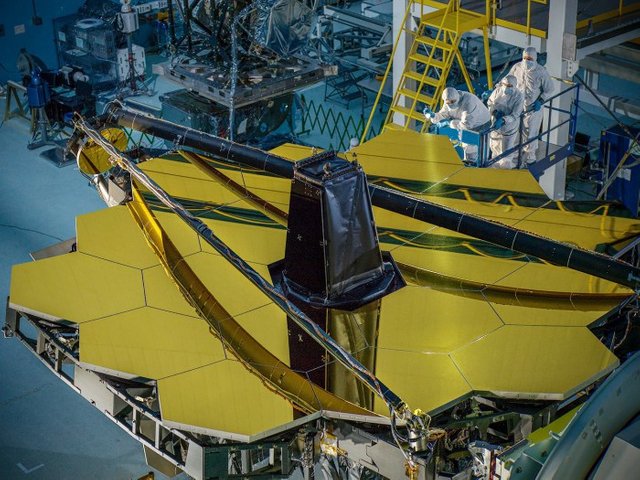NASA is developing a new meter
Identification and description of the properties of the set of exoplanets similar to Earth requires space telescope supersteady equipment, optical components which are able to move or distorted within picometres - scale, which is smaller than the size of an atom. This requires the development of the next generation of tools with which it is possible to guarantee a level of stability. More recently, NASA experts from the Center of space flight Goddard began work on the development of the modern laboratory instrument - high interferometer - the ability to reliably meet picometres level of stability. Until now, such minimal deviations could not be achieved.
At present, experts do not have a telescope, which can be very hard to present such demands. However, the scientific community is not standing still and trying to look into the future and explore the possibility of constructing such devices. For example, last year, the Association of Universities for Astronomical Research confirmed the development of High-Definition Space Telescope. It has been mathematically shown that with proper resistance and stability 12-meter space telescope will be able to easily locate and characterize Earth-like exoplanet. Another research group, estimating the requirements for another telescope called LUVOIR (Large Aperture Ultraviolet-Optical-Infrared Space Telescope) - a space telescope with a large aperture of ultraviolet, optical and infrared - came to the same conclusions.
"If we want to search for and analysis of extrasolar planets, like Earth in other solar systems, resistant to various influences projected telescope should be increased by orders of magnitude, even in comparison with the not yet launched Space Telescope, the James Webb" - Babak Saif, an expert on optics.
The device with the precision pikometrovoy
In order to help NASA achieve the next level of precision, the researchers began working with 4D Technology Corporation in Arizona. Like all interferometers, the tool splits the light and then re-gather it to measure tiny changes, including various movements. With this tool technical staff would be able to measure the distortions in the segments of the mirror mountings and other components of the telescope, especially during the heat, vibration and other tests on the impact of the environment.
Various distortions in the material of which the structure is made telescope arise when they are subjected to strong compression or expansion due to temperature variations. Very strong this effect manifests itself during the launch from Earth into outer space here and a sharp increase in congestion, and then the temperature drop. If the optics must meet certain requirements, to carry out a very difficult mission, move the scale of atoms in molecules due to thermal and dynamic effects, could greatly disrupt the ability of the device to distinguish, for example, light from exoplanets star around which it orbits.
James Webb Telescope

The cleanroom specialists prepare the mirror segments of the James Webb telescope to test a deviation from a theoretical plane.
As a fundamental test instrument on the basis of which will be developed by all the others, it serves to verify the optical device of the future's most powerful space observatory - the James Webb Telescope, which is scheduled to start in October 2018. It is expected that with the Earth's orbit, he will be able to explore every phase of life in our universe, from the first outbreaks of matter after the Big Bang, before the development of the Solar System. To perform this job observatory should be very stable. However, variations in its design is currently measured with an accuracy of only nanometers.
In order to ensure stability at this level we have developed a specialized dynamic laser interferometer that measures the instantaneous displacements in segments mirror mount structure and other components, even in presence of vibrations, noise or wind gusts.
"High-speed interferometer actually allows us to observe the dynamics of the movement of the structure at the nanoscale. This is a completely new tool, more sensitive than all the other four orders of magnitude, moreover, it measures the total surface of the mirror. "
However, future missions will not be enough LUVOIR such precision measuring devices, and therefore have to develop a device with an accuracy pikometrovoy, which is two orders of magnitude smaller than the diameter of an atom. Although you can now calculate the displacement in the picometer scale with the existing instruments, but the movement is nonlinear physics, and the results may not accurately reflect what is actually happening.
According to NASA information.